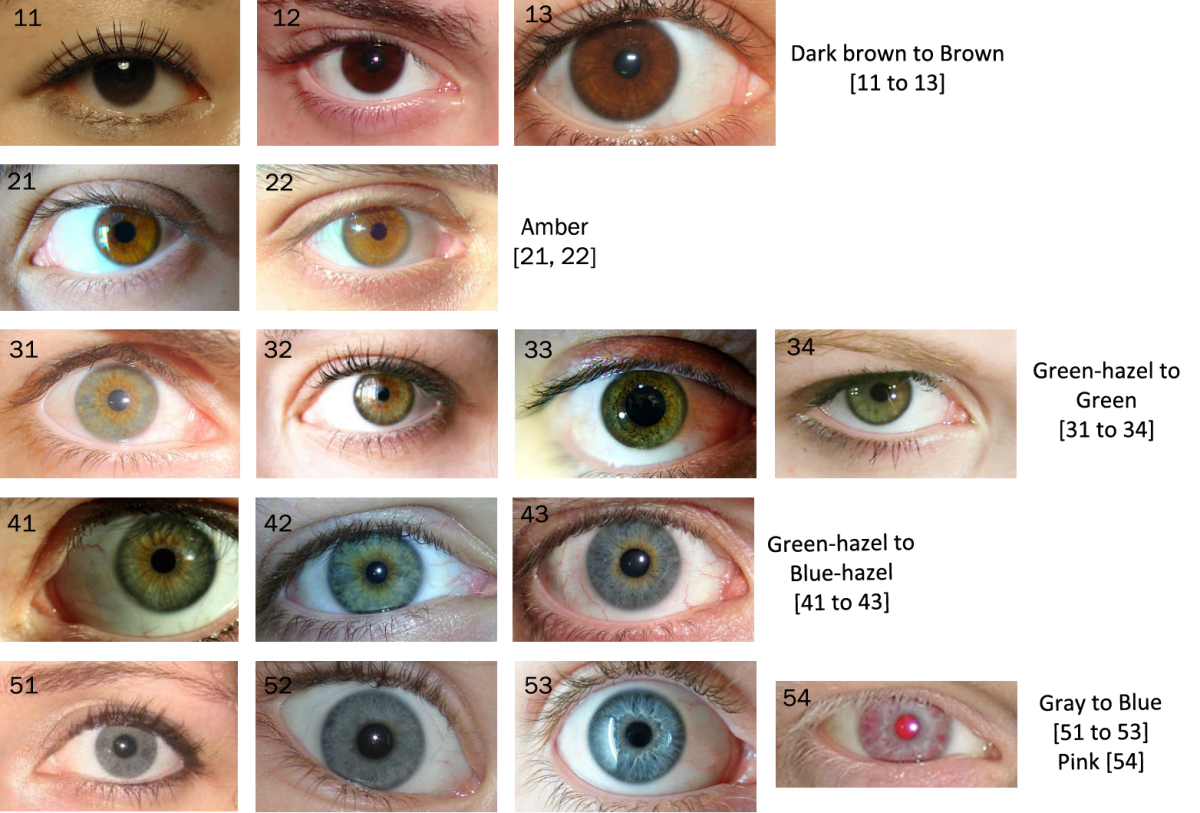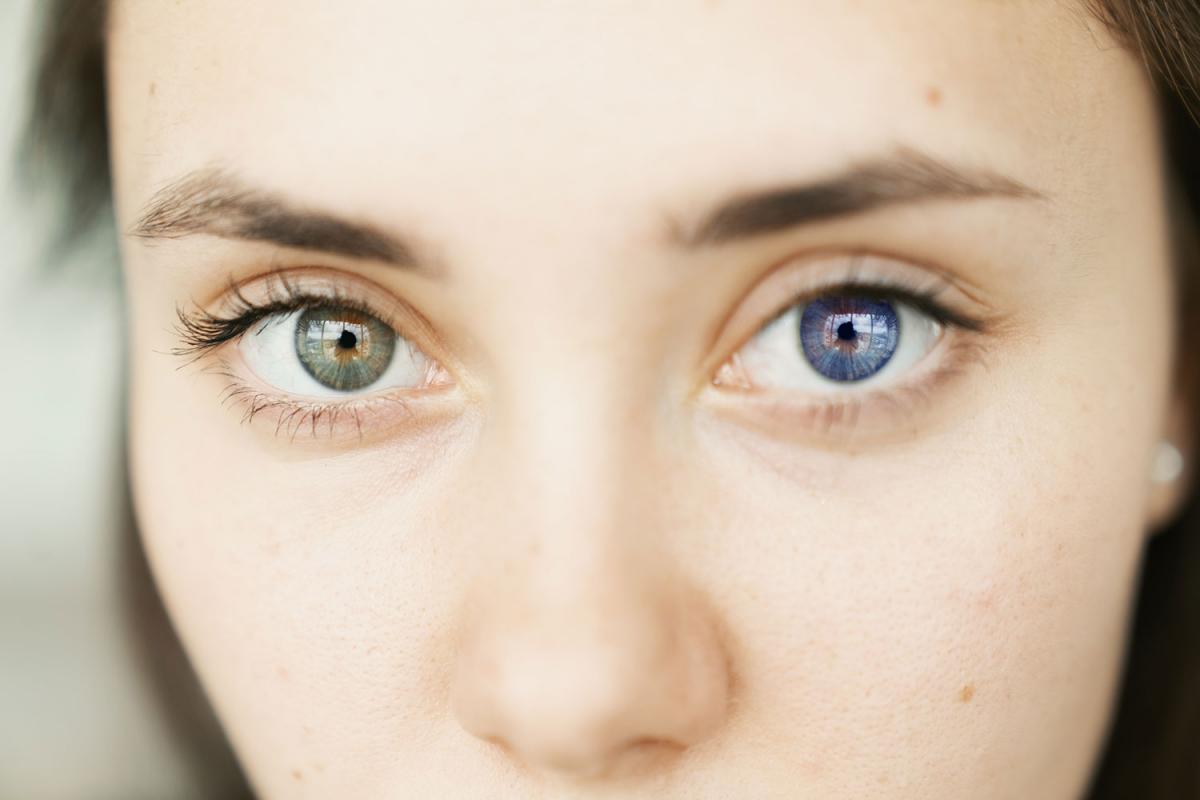Have you ever looked into a mirror and wondered why your eyes are the color they are? Perhaps you have a friend with stunning emerald eyes, or maybe your own eyes are a mesmerizing shade of blue. The captivating diversity of eye colors is a constant source of fascination, sparking curiosity about the science behind this remarkable human trait. In this exploration, we’ll delve into the intricate world of iris pigmentation, uncovering the fascinating reasons why people have different colored eyes.

Image: tyronecoxe.blogspot.com
Eye color, a captivating element of our appearance, is more than just aesthetic flair. It speaks volumes about our genetic heritage and the complex interplay of melanin, a pigment responsible for a myriad of bodily characteristics, including skin, hair, and eye color. Understanding why people have different colored eyes unravels a fascinating story of evolution, genetics, and the marvel of human diversity.
The Iris: A Canvas of Color
At the heart of this captivating phenomenon lies the iris, the colored part of the eye. It’s a delicate structure, composed of a complex network of muscle fibers, connective tissue, and pigments, primarily melanin. The amount and distribution of melanin within the iris determine the eye color we see.
Melanin: The Pigment Mastermind
Melanin, the key player in our eye color symphony, exists in two primary forms: eumelanin and pheomelanin. Eumelanin, the darker of the two, is responsible for shades of brown and black. Pheomelanin, on the other hand, imparts lighter hues, ranging from amber to red.
The Spectrum of Eye Colors
The spectrum of eye colors we observe is a captivating tapestry woven by the interplay of these two melanin types.
- Brown eyes: Brown eyes, the most prevalent eye color globally, are characterized by a high concentration of eumelanin in the iris. This pigment absorbs most light, giving brown eyes their rich, deep hue.
- Blue eyes: The magic of blue eyes lies in a fascinating phenomenon called Rayleigh scattering. While blue eyes have less melanin than brown eyes, a lower density of eumelanin allows blue wavelengths of light to scatter more prominently within the iris, resulting in the perception of blue.
- Green eyes: The captivating green hue of green eyes emerges from a fascinating combination of melanin types. These eyes possess a moderate amount of eumelanin, along with a touch of pheomelanin. This blend creates a unique optical effect, scattering light in a way that reveals the verdant green shade.
- Hazel eyes: Hazel eyes are a mesmerizing spectacle of shifting hues. Their appearance can change depending on lighting conditions, exhibiting shades of brown, green, and even gold. This versatility stems from their unique composition, featuring a combination of eumelanin, pheomelanin, and lipochrome pigments.
- Gray eyes: Gray eyes, less common than other eye colors, share a common genetic origin with blue eyes. They are characterized by a low density of melanin, which allows for a more even reflection of light.

Image: www.holidaysmart.com
Beyond the Basics: Other Factors
While melanin is the primary determiner of eye color, other factors contribute to the nuanced variations we witness:
- Genetics: Eye color, like most traits, is inherited. Multiple genes influence the amount and distribution of melanin in the iris, making eye color a complex genetic inheritance pattern.
- Age: Eye color can subtly shift as we age. The amount of melanin in the iris can fluctuate over time, potentially leading to a slight change in hue.
- Light: The environment and lighting conditions can also influence how eye color appears. Bright sunlight can accentuate the brilliance of blue and green eyes, while dim lighting can make browns and hazel appear darker.
The Evolution of Eye Color
The tapestry of eye colors we observe today is a culmination of evolutionary processes. Researchers believe that the ancestor of modern humans likely possessed brown eyes, the most common eye color across the globe. Blue eyes, thought to have originated in the Black Sea region around 6,000 to 10,000 years ago, are a relatively recent development in human evolutionary history.
The emergence of blue eyes, and other eye colors, is likely connected to adaptations to various environmental conditions. The precise evolutionary advantage of specific eye colors remains a topic of ongoing research, but it’s plausible that they played a role in enhancing vision in different environments or signaling mate preference.
Debunking Myths: What Eye Color Does Not Tell Us
While eye color is a fascinating window into our genetic heritage and evolution, it’s important to dispel common myths and stereotypes surrounding it:
- Intelligence: Eye color has no correlation with intelligence. This is a baseless stereotype that perpetuates damaging assumptions.
- Personality: Eye color is not a predictor of personality. It’s vital to reject preconceived notions and embrace individuals for their unique character traits.
Embracing the Diversity of Eye Color
The rich diversity of eye colors reflects the remarkable tapestry of humanity. Each eye color, from the deepest brown to the vibrant green, is a testament to our unique genetic history and the intricate beauty of human diversity.
Let’s celebrate the captivating array of eye colors, appreciating them for their inherent beauty and recognizing that true artistry lies in the individual, not in the pigment of their iris.
Why Do People Have Different Colored Eyes
Exploring Further: The World of Eye Color
The journey of understanding eye color is just beginning. There’s a world of fascinating research and ongoing discoveries waiting to be explored.
- Genetic Testing: If you’re curious about your genetic heritage and potential eye color variations, consider contacting a reputable genetic testing service.
- Medical Experts: If you have concerns about your eye health or experience any changes in eye color, consult with an ophthalmologist or other qualified medical professional.
- Online Resources: Numerous online resources offer extensive information on the science of eye color and its fascinating history. Explore reputable websites and research journals to delve deeper into this enthralling topic.
Let’s embrace the diverse beauty of eye colors, celebrating the captivating genetic heritage they embody and recognizing the unique artistry of every individual.






